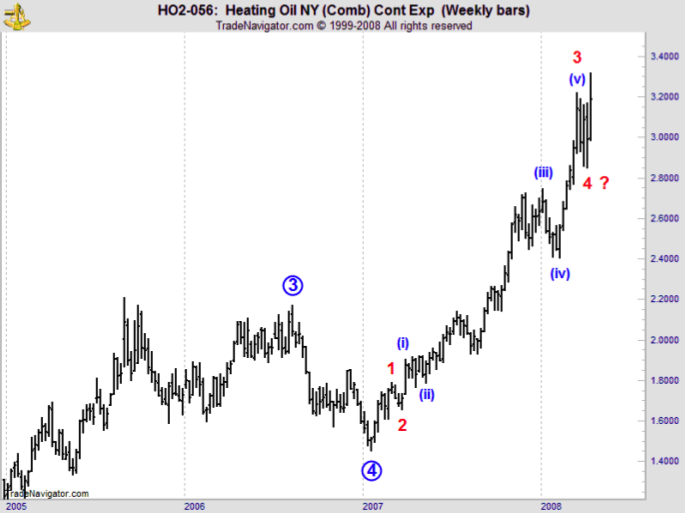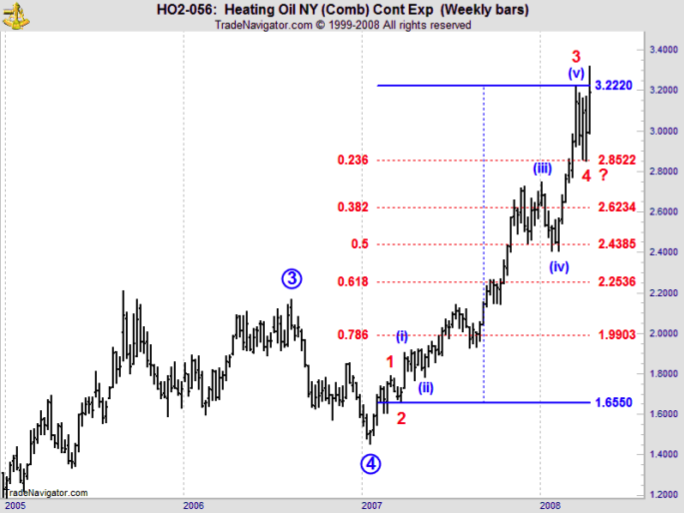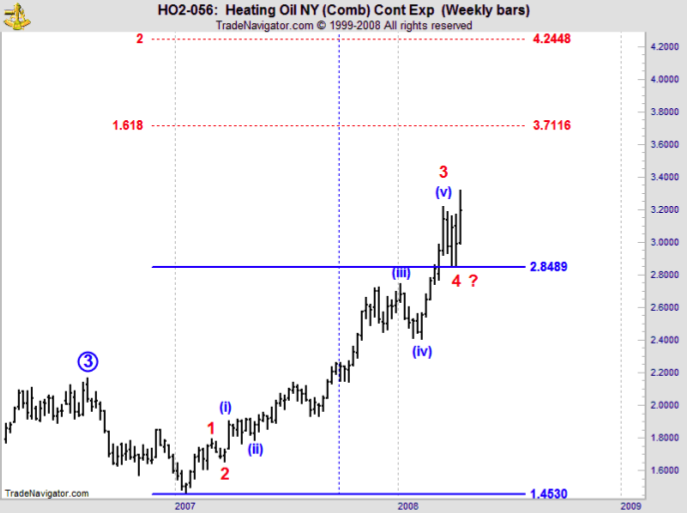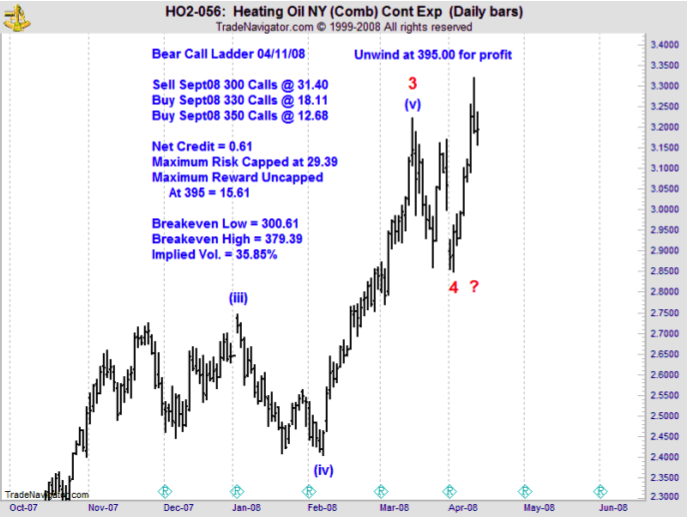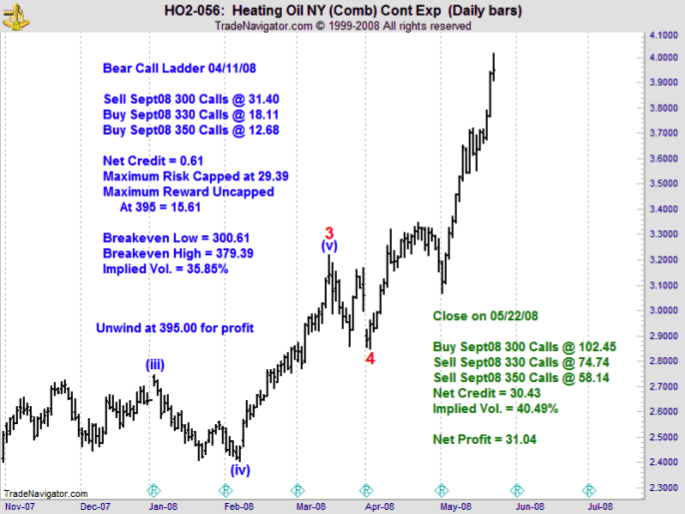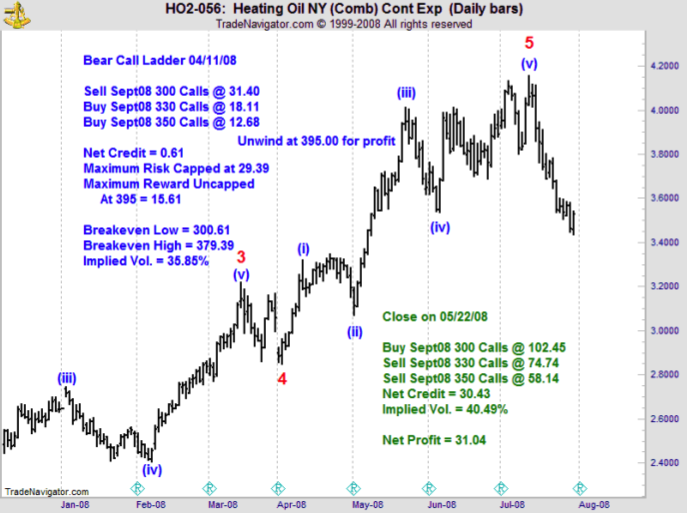EWP Option Strategies – Part 7
EWP Option Strategies – Part 7
Alright, Evil Rat Academy is officially in session – and since Mrs Tightbuns is needed otherwise (ahem), I was able to find an adequate replacement for today’s installment:
Okay, and now it’s time for the seventh part in our ongoing EWI sponsored series on option strategies. The following post is excerpted from the Elliott Wave International (EWI) eBook, “How to Use the Elliott Wave Principle to Improve Your Options Trading Strategies — Vertical Spreads.” EWI has agreed to make the full eBook available for free to all Evil Speculator readers until the conclusion of this series. So go ahead and download it here if you want to study ahead – however I would appreciate it if we kept all discussions limited to the current chapter.
Last time we were introduced to the Bear Call Ladder and the Bull Put Ladder. If you missed that chapter then I strongly recommend you go back and study it before continuing here. You can also pull up all prior installments of the the entire series via this link.
We now press on with an actual real life example of how to trade/manage a Bear Call Ladder.
Fig. 32
Let’s go through a trading scenario where we use one of these strategies in a situation of ambiguity. This is an Elliott wave-labeled weekly continua- tion bar chart of heating oil. Let’s count up from the 2007 low: we have Minor waves 1 and 2 (red), a big extended 3, and now maybe 4. Keep in mind, heating oil is a commodity. We know that in commodities the fifth wave is often extended. We already have an extended third, so chances are we won’t get a repeat performance in the fifth — but we could. That small possibility is enough to move us forward. The chief question to answer is whether wave four has ended. Maybe the small rise from Minor wave 4 is part of an expanded flat and we come back down. Or, maybe we’re going to skyrocket up in wave five. The first step into figuring that out is to look at the retracement made by Minor wave 4.
Fig. 33
Figure 33 overlays a Fibonacci retrace- ment table to the chart of heating oil. As you can see, wave 4 has made a .236 retracement of wave three. That is acceptable, albeit shallow. Far more common to fourth waves is a .382 retracement of wave three. But again, .236 is still adequate.
Fig. 34
The next order of business is to assess where we could go in Minor wave 5. In Figure 34, I’ve calculated two common Fibonacci projection points by multiplying the net distance trav- eled of waves 1 through 3 by .382 and .618. We get 3.5247 and 3.9421, respectively.
Fig. 35
Those are possible targets for wave five. Another thing we can do is use the Fibonacci dividers that we dis- cussed early on in section one (bull call spread/ bear put spread) and illustrated in Figure 11. To reiterate: Wave four often divides the entire impulse wave into either the Golden Section or two equal parts. The chart above identifies those two areas in the case of heating oil. The Golden Section would bring wave 5 to 3.7116, and two equal parts would bring wave 5 to 4.2448. This handy guideline gives us two more targets for this particular strategy.
Fig. 36
What about time? Here again we can use Fibonacci analysis to estimate when wave 5 will end. As a guideline, wave five can equal the time it took to finish waves one through three multiplied by .382, .5, or .618. In Figure 36, you can see where these dates fall into the future on the weekly bar chart. Our entry point is April 11, 2008, so in sequential order .382 comes out to the week ending September 12, 2008; .5 comes out to the week ending October 31, 2008; and .618 comes out to the week ending December 19, 2008. So, now we have a reasonable time reference.
Fig. 37
With price and time targets in place, we can now set the wheels of this trade strategy in motion. We’re going to do a bear call ladder on April 11th. In Figure 37, the daily chart of heating oil is blown up to magnify the price point of interest — the up leg rising out of Minor wave 4. Make no mistake, this move is unclear. The initial drop could just be wave A of 4, making the rise wave B (leading to a drop in wave C). Maybe we get lucky and we skyrocket in wave 5. Or, the way we lose the most, wave 5 barely bounces. This is the chance we take.
So, let’s get to the numbers. I’ve sold the September 300 calls at 31.40. On April 11th, the high was 3.2376 and the low was 3.1557. If you’re confused by the “300” calls, don’t be. The puts and calls that I’m dealing on are quoted based on the price (on the right side of the chart) times 100. For example, 3.00 would be quoted as 300 (3.00 times 100). That’s how these options are quoted, so from this point forward I’ll refer to the prices in the same manner. The September options expire on August 26, 2008, close to the .382 time relationship. That gives us about five months, a suitable stretch of time since this is NOT a short-term strategy. Remember, we’re looking for a big move at a relatively high degree. The 300 calls were in-the-money. We were trading around 315-323. I’m going to buy the out-of-the-money September 330 calls at 18.11. If there is just a small up move, I will be giving up 30 points, but we knew we had to sacrifice a small move to implement this strategy. Then I’m buying further out-of-the-money September 350 calls at 12.68. Why 350?
If you recall, we said that if wave 5 were .382 times waves 1 through 3, then it would go up to 352.47 (see Figure 34). We’re looking for wave 5 to go at least to 352, with the potential to go much higher. The maximum risk is capped at 29.39. The maximum reward is technically uncapped, but 395 is a good target, and at 395 we would make 15.61 points. Again, 395 comes directly from the analysis in Figure 34; wave five commonly equals .618 times the net distance traveled of waves one through three. That target came out to 394.21.
Let’s sum it up. At minimum, we should get up to 352. The lower break/even is 300.61. The higher breakeven is 379.39. The implied volatility is 35.85 percent. And, we’re doing this all on April 11th. If prices collapse past this wave 4, we have the net credit. We really don’t have to do anything. We could just walk away. So, let’s see what happened.
Fig. 38
In Figure 38, you can see that we did, indeed, get a big move up. This is now May 15, and we made a high of 372.28 the previous day — this is actually around the area where wave 5 would form the Golden Section. (Recall Fig- ure 35 and the guideline of wave four as a Fibonacci divider.) We still haven’t gotten to 395, and it looks quite possible that wave five could extend. So, we can afford to hold onto this position for a little while longer. The next chart reveals whether the decision to stay in this trade and hold out for further gains was the right one.
Fig. 39
Yes, we skyrocketed up even further. The last bar on this chart, May 22nd, has a high at 401.53 and a low of 390.80, so we got to that 395 level. It’s time to unwind and get out. So, let’s see how we did. We bought back the September 300 calls at 102.45, sold the 330 calls at 74.74 and sold the 350 calls at 58.14. We earned a net credit of 30.43 points. The implied volatility was 40.49%, however that’s a bit misleading. That was still on the June contract, which had about two weeks to run. The September contract was really down to around 34% — so no major change there. Finally, this trade produced a net profit of 31.04 points.
Fig. 40
Bear in mind, the key to this strategy was not just the wave count. It was using Fibonacci analysis to give us an approximation of what we would expect. And, if we pan out a bit further, we can see how close our projection came to reality. Our exit day was May 22nd. On the chart in Figure 40, that date correlates to the peak of Minuette wave (iii) (blue) of Minor wave 5. After that, there was Minuette wave (iv) and (v), the latter of which unfolded as a fifth- wave diagonal. As we have repeatedly learned from the first three sections of this course, fifth-wave diagonals precede dramatic reversals. And that’s exactly what occurred here.
Mole here again – boy, that was a long one – congrats if you made it all the way down to here. But I think it was definitely worth it as we will use this type of ladder in the future at motive stages of the wave cycle.
Enjoy your weekend, you deserve it!
Cheers,
Mole










